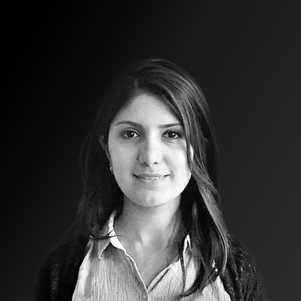Iran was considered a candy store for Western planners during the reign of the Shah, but that stopped abruptly after the Islamic Revolution. In her PhD research, Elmira Jafari notes that there was no blind imitation of American and European planning ideals, but that present-day Tehran could use some Western ideas to curb the urban chaos.
Iran had its heyday in the second Pahlavi period (1941-1979). During the reign of Shah Mohammed Reza Pahlavi, the oil economy flourished and many foreign companies settled in the country. This included urban planners, who provided tools to manage the explosive growth and transformation of Tehran. Especially in the sixties and seventies, they played a role in various urban development projects. It would transform the city from a historic city with a strong religious stamp into a modern, secular metropolis. “But that doesn't mean that planning was a purely Western affair. Iranian urban planners played a crucial role,” says Jafari. “Of course, many of them studied at American or European universities, but they actively collaborated with local policymakers and politicians. This resulted in a very distinct Iranian planning system.”
Transnational
Jafari views Tehran's spatial development from a transnational perspective. This involves the cross-border practices of local, national and global systems. Archive research shows that every step of urban development is influenced by international planning traditions and by the local political and social agenda. For example, in the First Tehran Master Plan (1966-1969), the famous American firm Victor Gruen Associates was theoretically in charge. But local parties also used the basic principles of this agency to shape their own ideas. Planning of residential areas around shopping centres to fuel consumerism was clearly inspired by American examples. But Jafari notes that urban planners with their long-term strategies also proactively responded to the social, economic and political transformations of the future without denying their own background. This can be seen, for example, in the way the new Central Business District was developed between 1975 and 1980. “Planners chose an empty stretch of land located in the heart of Tehran for this big project. The heart of Iranian society was thus connected with worldwide developments; it actually became an international centre.”
She notes that modern infrastructure, residential concepts and skyscrapers that popped up everywhere were also incorporated into typical local concepts. The interests of different social groups were served that way.
Western urban luxury
At first glance this is positive, but the Islamic government that took power in 1979 saw it differently. The sweep they carried out against "western urban luxury" did not just lead to an exodus of international firms, but also to a marginalization of local planners. The new regime mainly targeted the poor urban populations. By giving out land very cheaply to anyone who wanted to build a house, this part of the population was given new opportunities. But this also led to unbridled urban sprawl. No long-term planning was involved. The war with Iraq (1980-1988) exacerbated the chaotic situation, as millions of people moved from the affected areas to the capital.
Today, planners and architects are only given technical tasks to carry out. They are not involved in long-term planning; the market largely determines what happens. Recent social housing projects in and around Tehran show incohesive sets of isolated blocks of flats in environmental deserts. There is no employment, and urban facilities are absent. Jafari notes that this is bad for the functioning of society in the long term. “Urban planners therefore have to fight for their right to plan. Without planning, there is no catalyst for developments that are beneficial to everyone.”
Published: August 2022
More information
Read the full thesis: "The making of the Modern Iranian Capital: On the Role of Iranian Planners in Tehran - Master Planning at a Time of Urban Growth and Transnational Exchange (1930-2010)"
Click here for the link to the TU Delft repository.

